We had some time to kill while we were exploring San Francisco back in January.
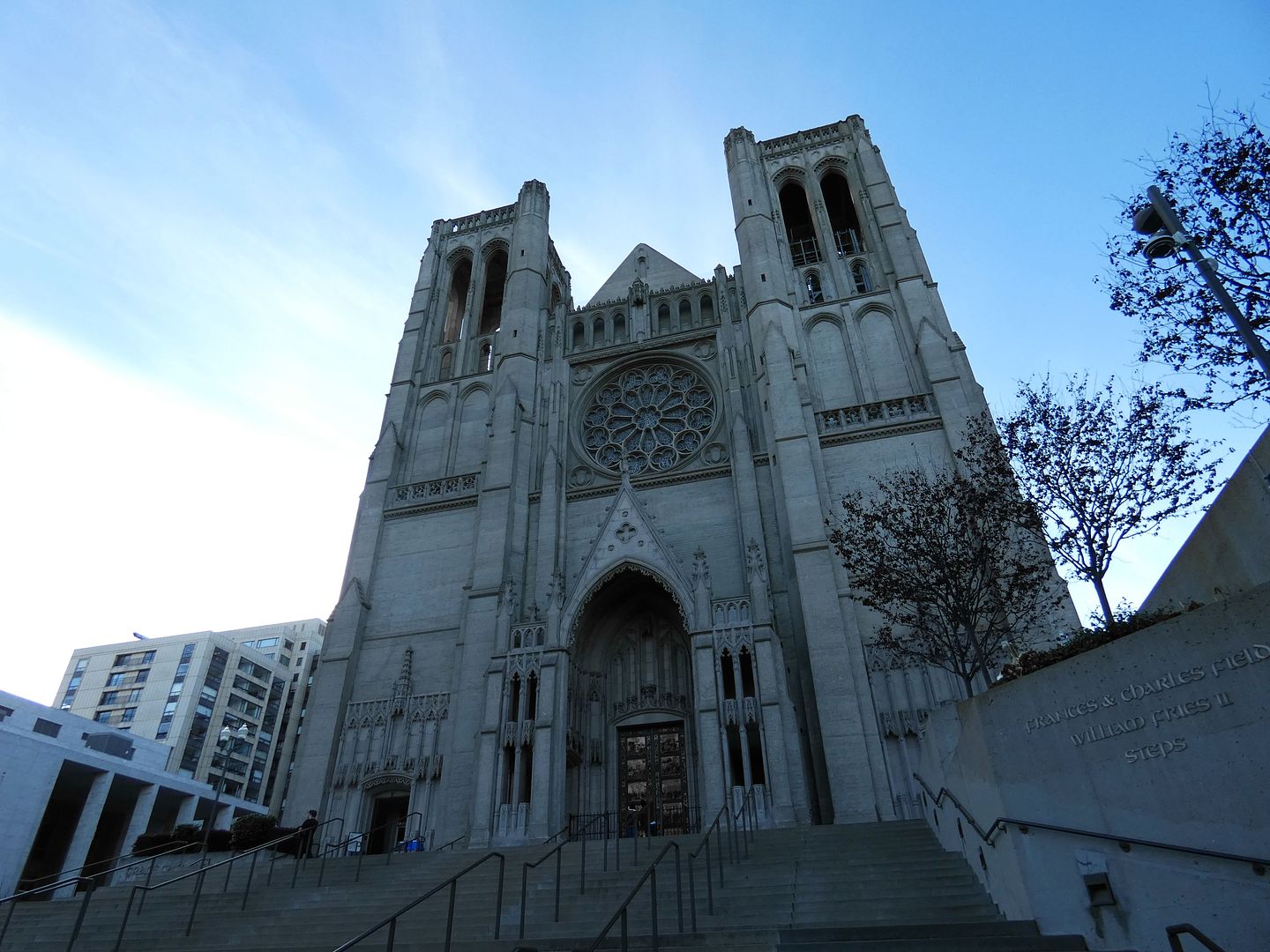
So, I asked my friend—who's not religious, but neither am I—if we could go to Grace Cathedral to take one of the tours they offered.

I was hoping for some history, maybe some insight on the architectural details, like the reproductions of Lorenzo Ghiberti's "Gates of Paradise" (from the Florence Baptistery in Italy) that were cast in 1956 (from the original molds) and have adorned the cathedral's front doors (now known as the "Doors of Paradise") since 1964.
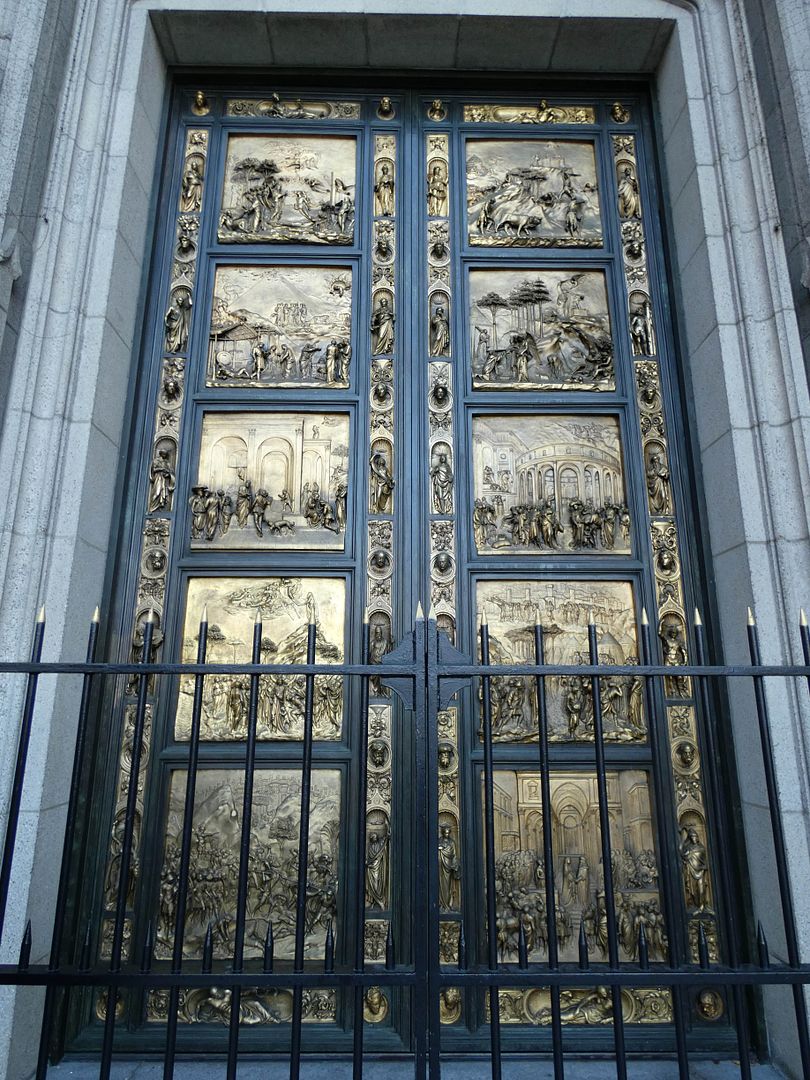
Located atop Nob Hill, it was designed in the English Gothic style by architect George Frederick Bodley—who died in 1907, decades before it would be completed.

His plans were completed by architect Lewis P. Hobart, who designed several buildings to help San Francisco rebuild after the devastating 1906 earthquake and fires.
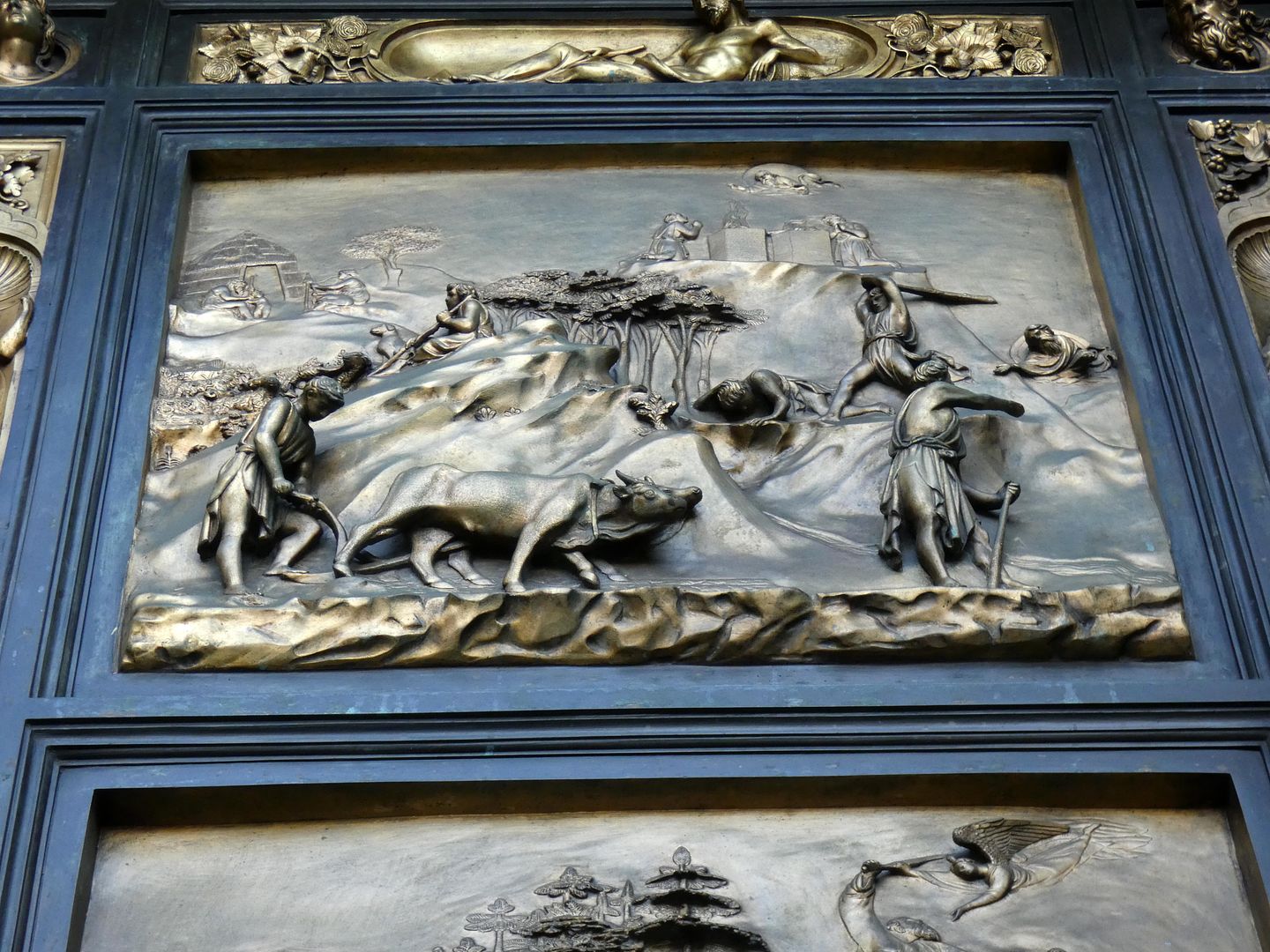
But although the cornerstone was laid in 1910, construction didn't seriously start until 1927. And the congregation didn't even move in until 1934.
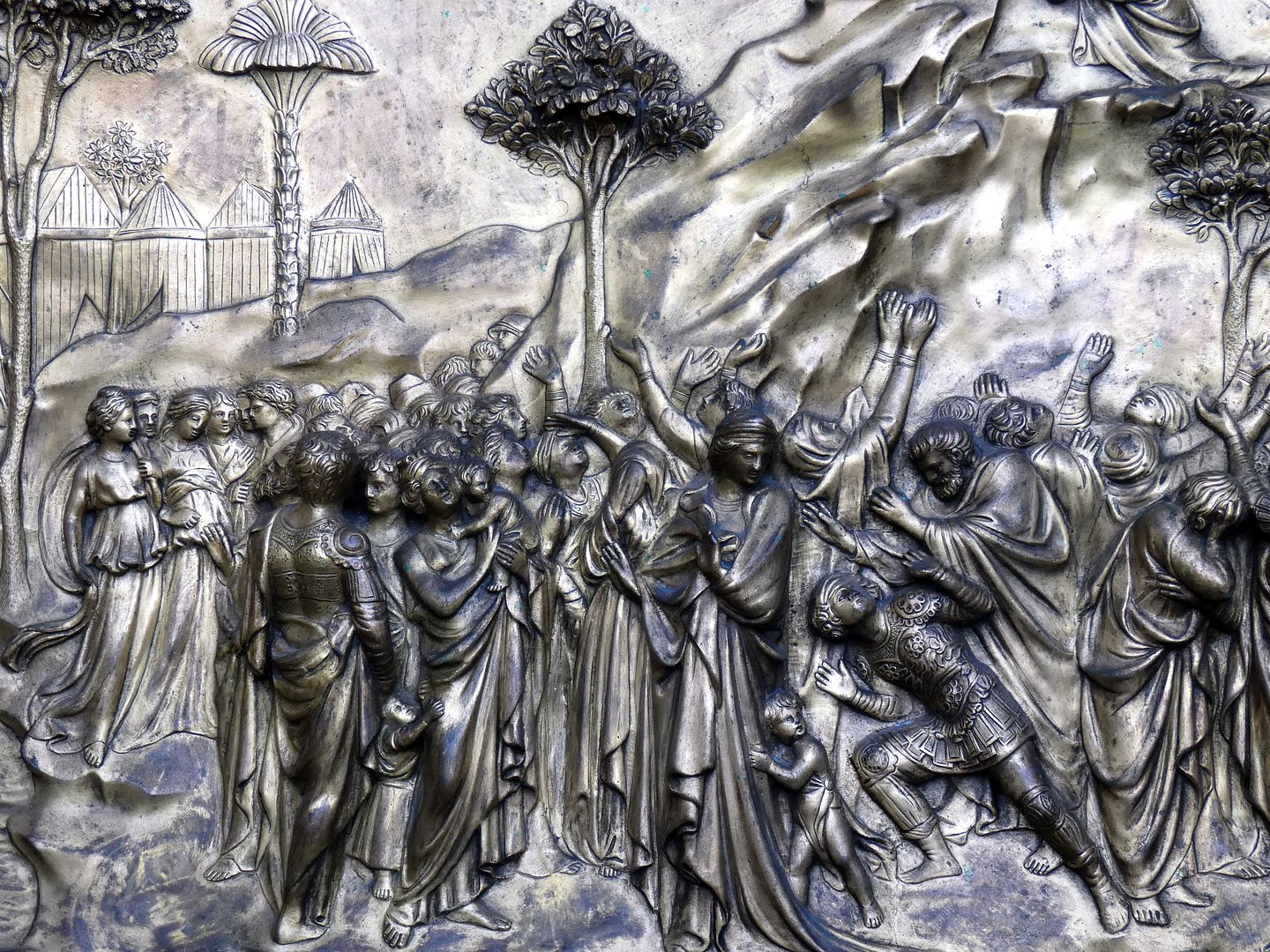
And even then, it wasn't finished—although work was halted for decades, finally resuming to complete the darn thing in 1964.
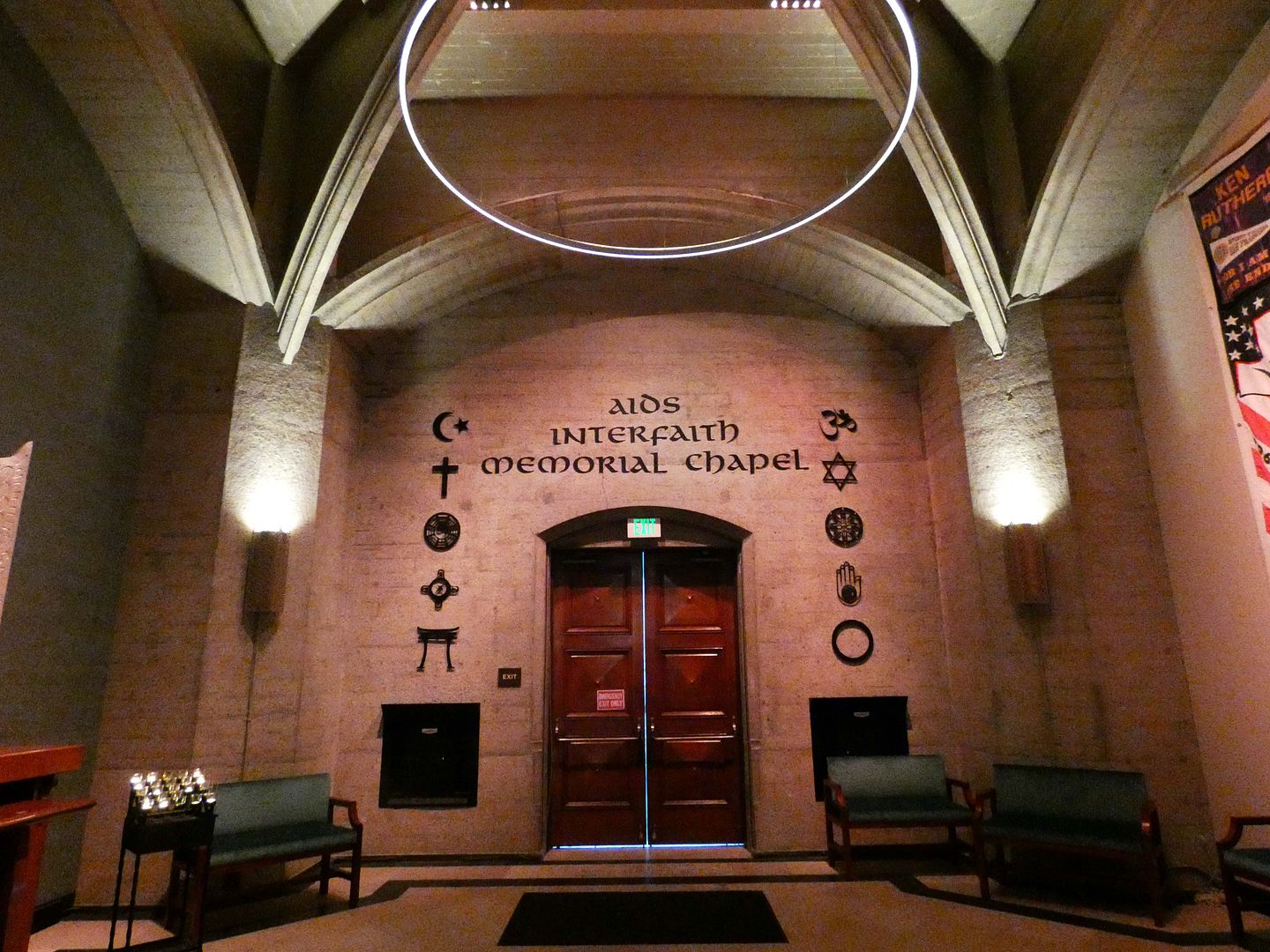
One of the newest additions to Grace Cathedral is the AIDS Interfaith Memorial Chapel—the first of its kind in San Francisco when it was dedicated in the year 2000, honoring those who'd succumbed to the disease and those who were living with it. (Today, the cathedral holds an annual "Pride Mass" and transforms its front steps into a rainbow motif for Pride celebrations.)
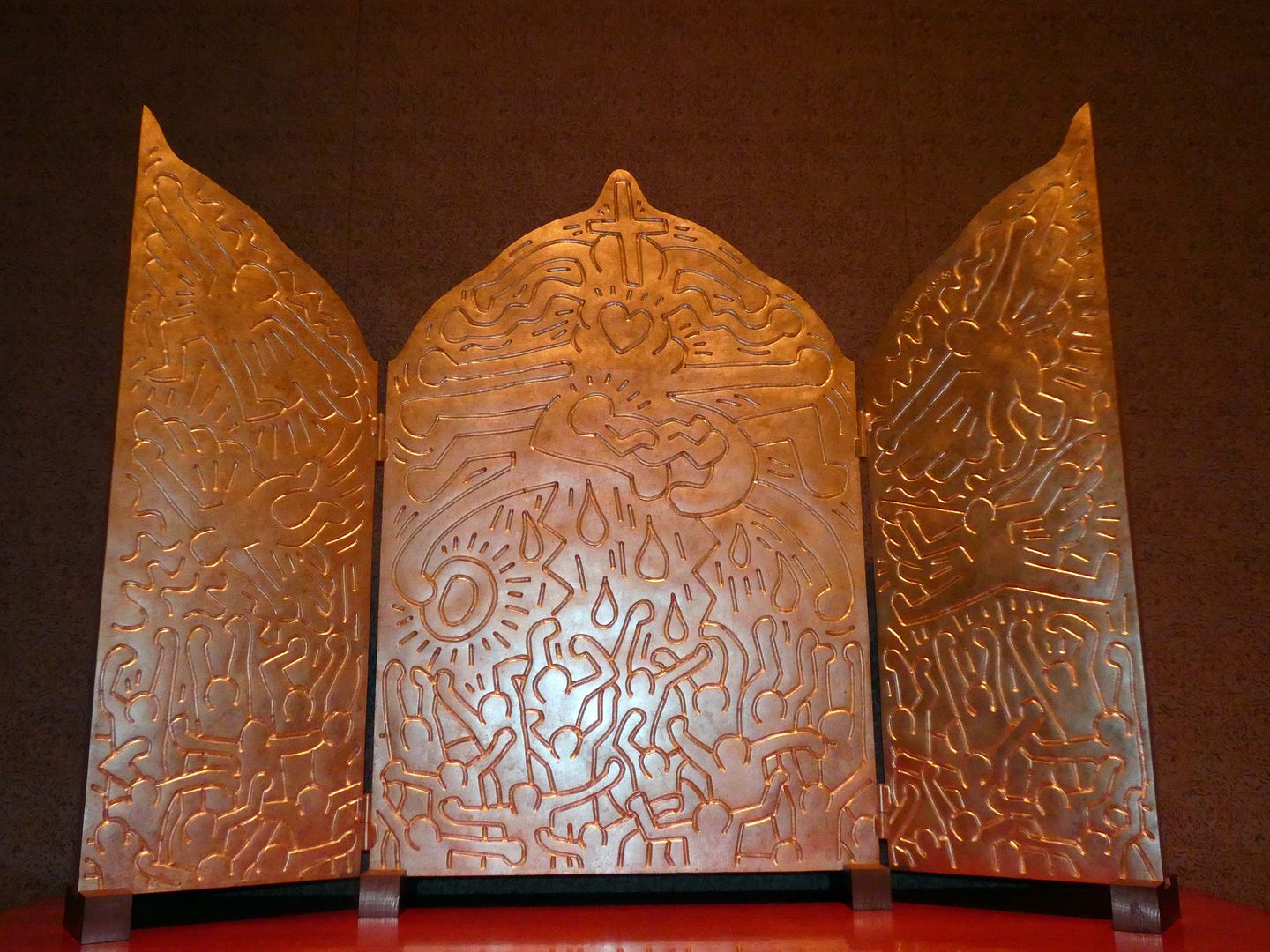
Inside the chapel, which is just to the right as you walk in the cathedral's front doors, you'll find artist Keith Haring's last major work before he died in 1990 from AIDS-related complications: one of nine existing versions of "The Life of Christ," a triptych altarpiece cast in gold and bronze. (There's another one at the Cathedral of St. John the Divine in NYC. This one was donated to the cathedral with the help of Yoko Ono.)
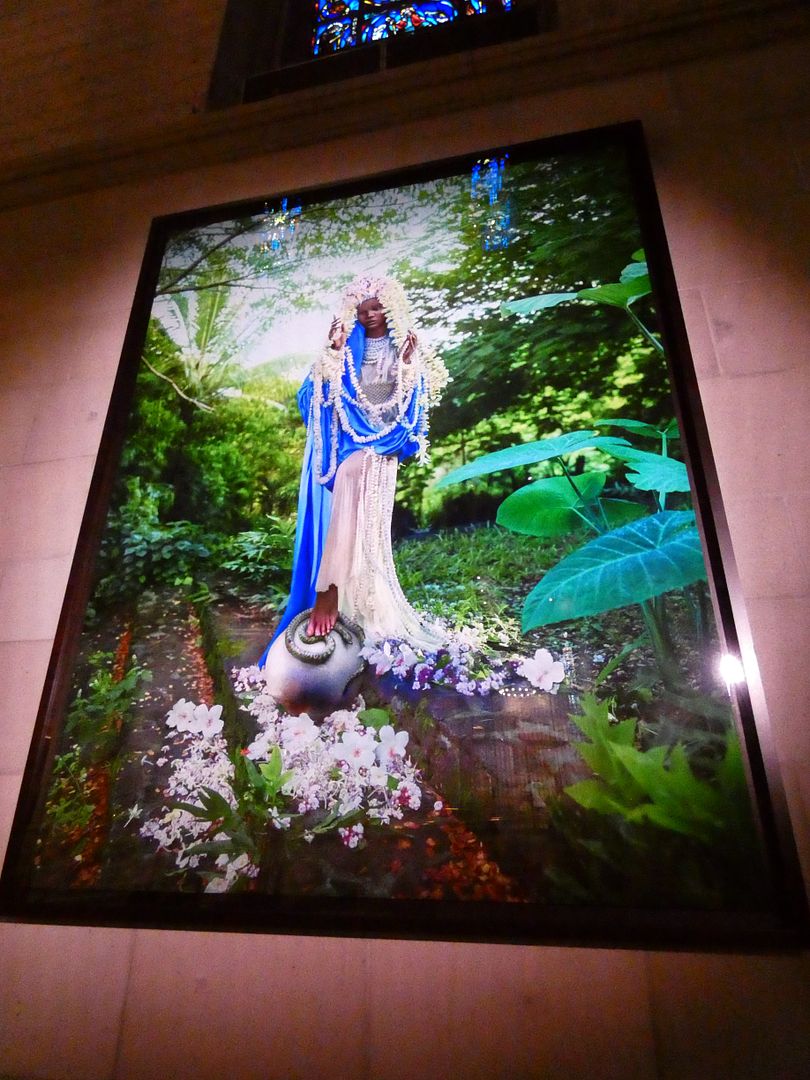
In stark contrast is the "Our Lady of the Flowers" photograph (circa 2018) by David LaChapelle, which the cathedral acquired in 2023.
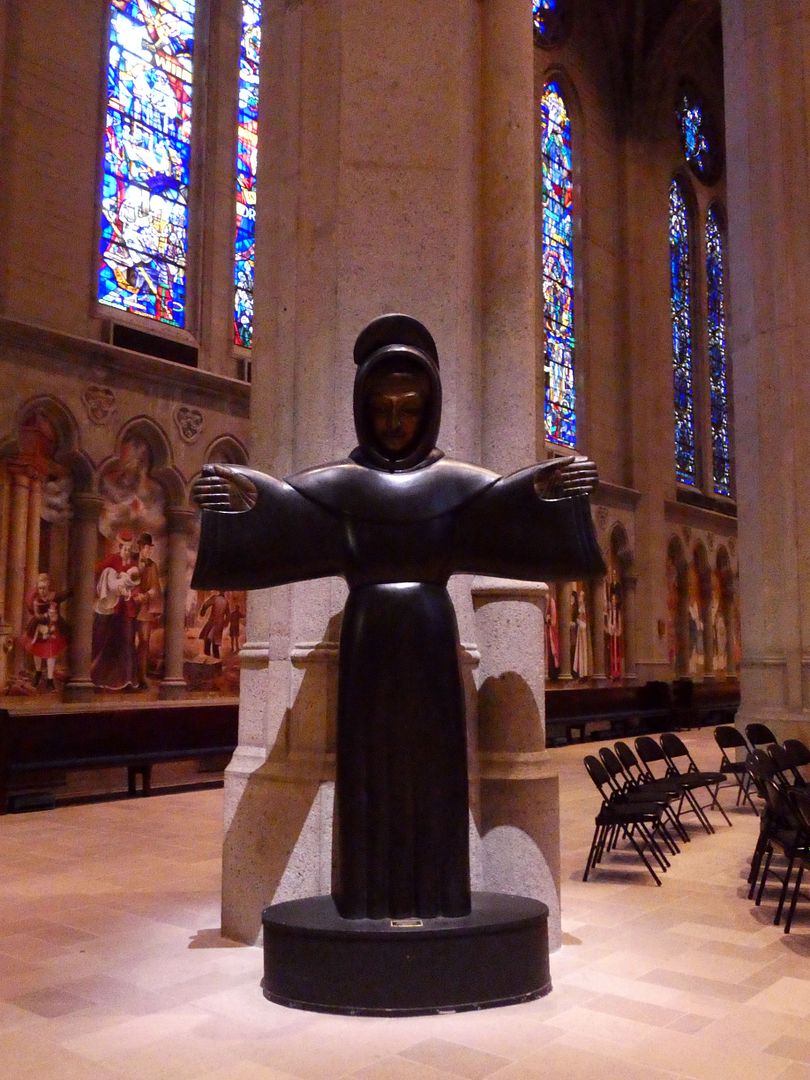 Beniamino Bufano's St. Francis bronze statue
Beniamino Bufano's St. Francis bronze statueUnfortunately, the cathedral had already conducted its last tour of the day by the time we arrived—but they allowed us to sit in on a program in progress (honoring Martin Luther King, Jr., who gave a sermon there in 1965 as part of its consecration celebration).

And we got to walk around a little bit on our own—which is partially why it's taken me over seven months to finally post about it.
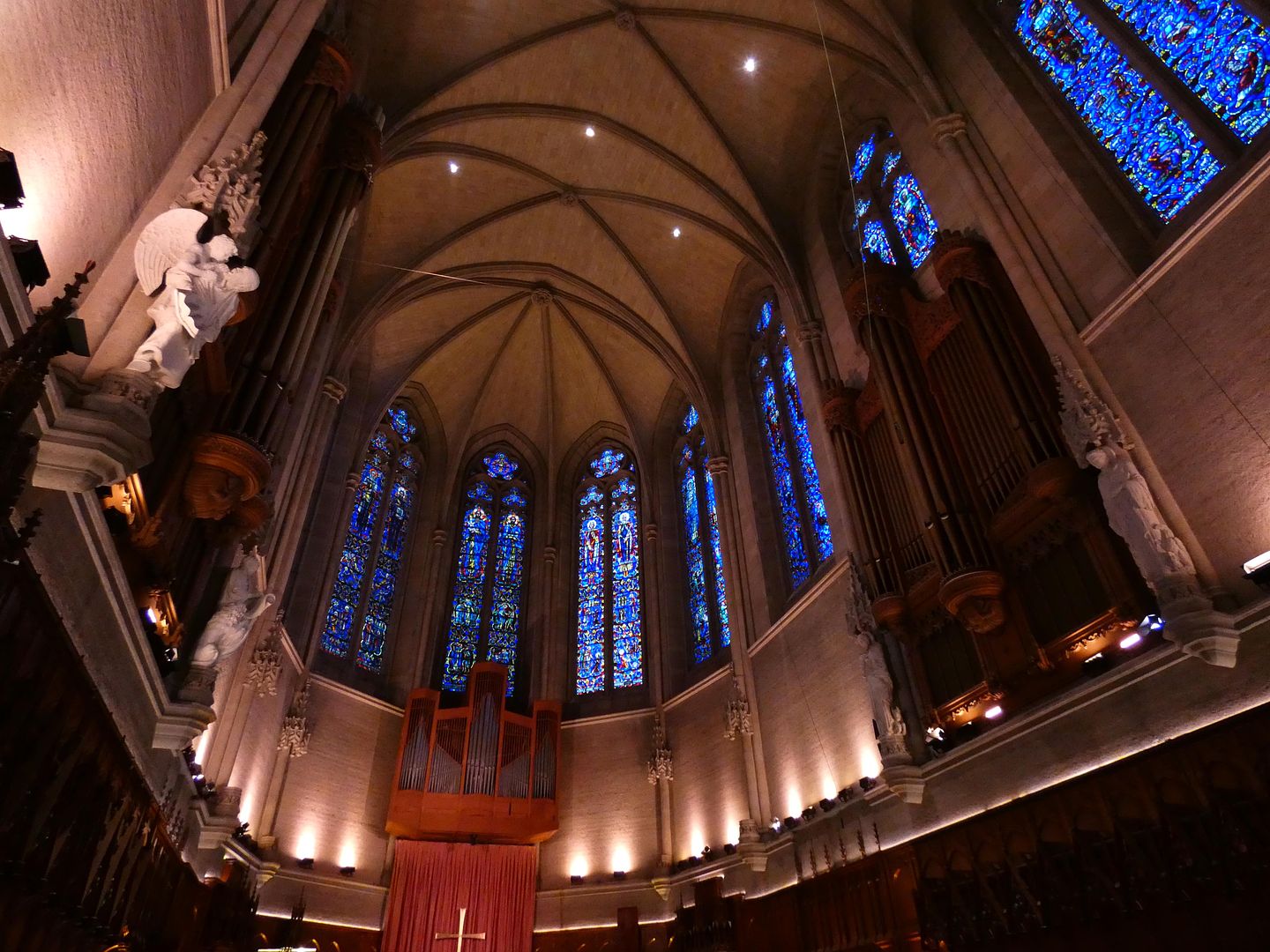
Figuring these things out after-the-fact isn't always easy.

As it turns out, there are three organs in the cathedral—but we didn't even get to hear one of them play.
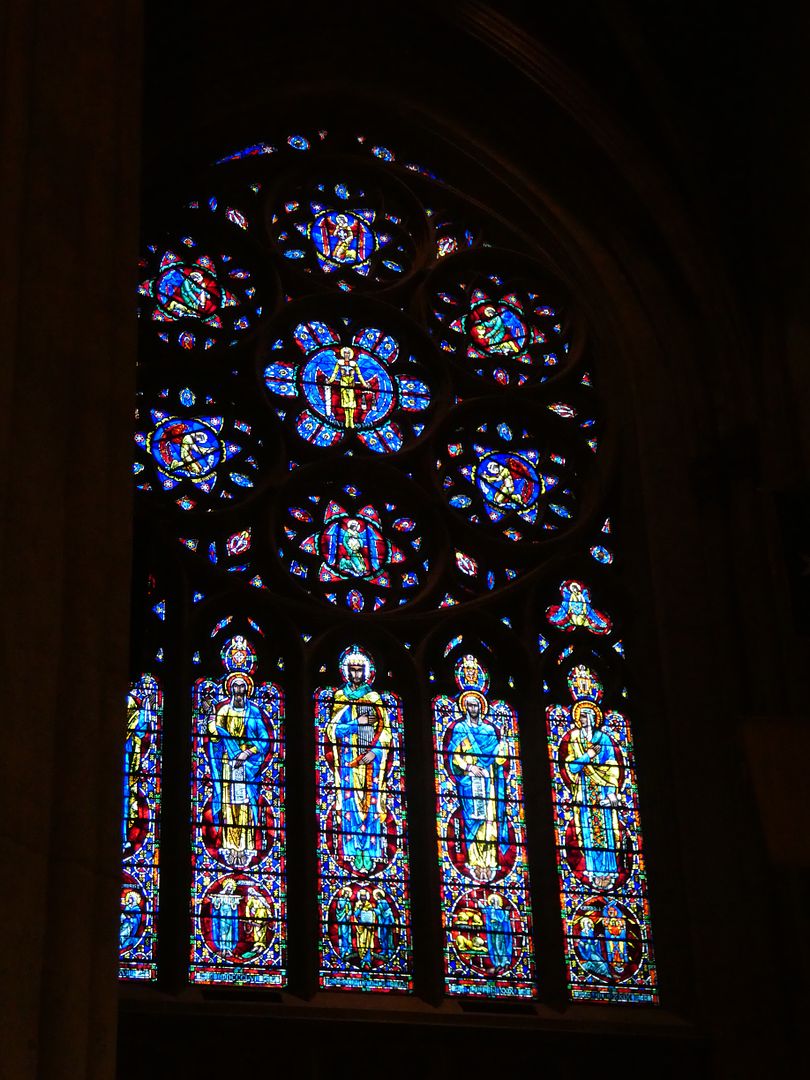
Five different artists created 68 stained glass windows in three different techniques—including traditional leaded glass (34 of which were created by Charles J. Connick's studio in Boston, including those in the apse), faceted glass (by the Loire Studio of Chartres, France), and fused glass (by Italian artist Narcissus Quagliata).
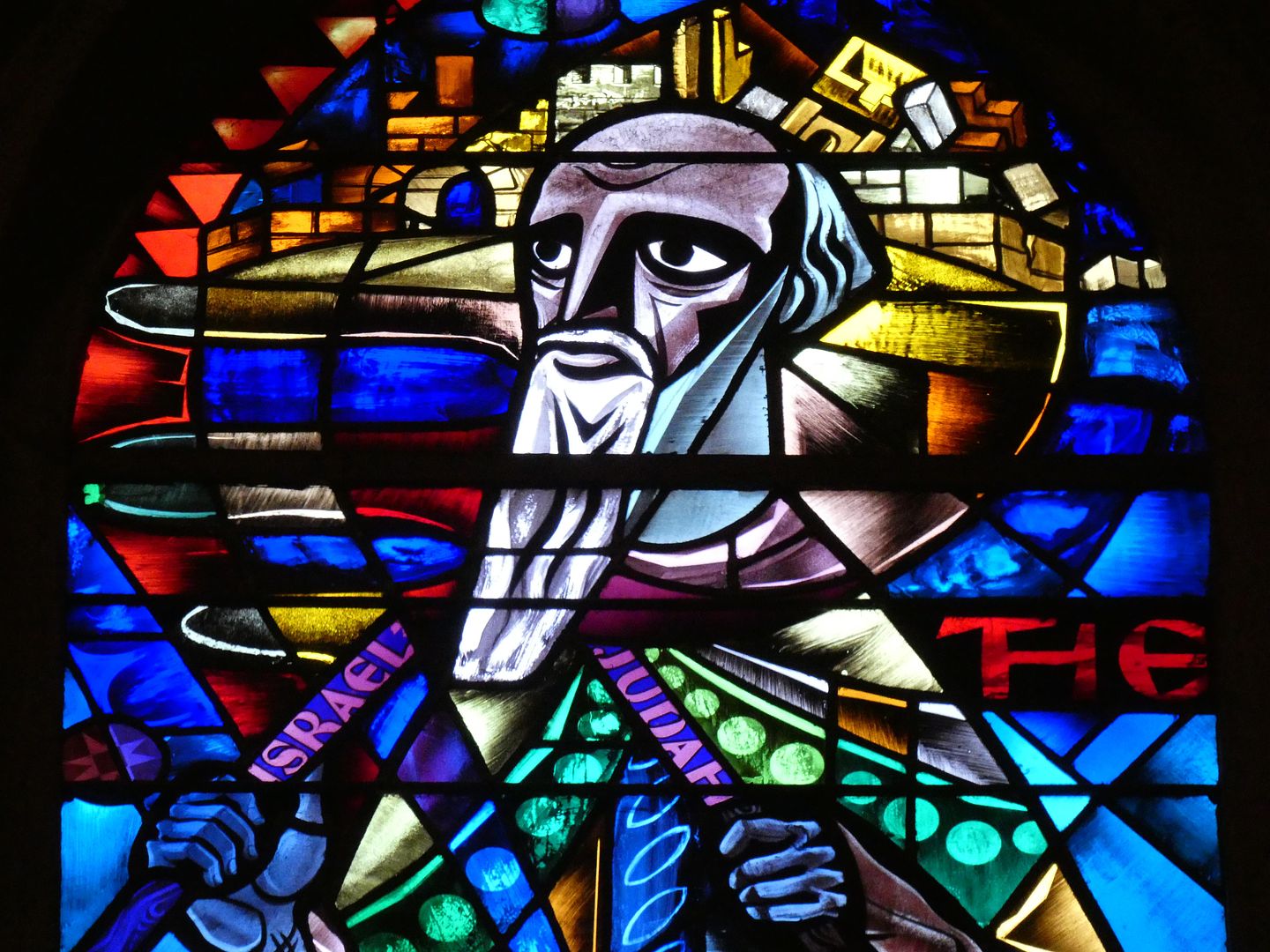
Of particular note were the designs by Marguerite Gaudin for the Willet Studio, featuring passages of scripture like "Except a man be born of water and of the Spirit, he cannot enter into the kingdom of God" (from John 3).
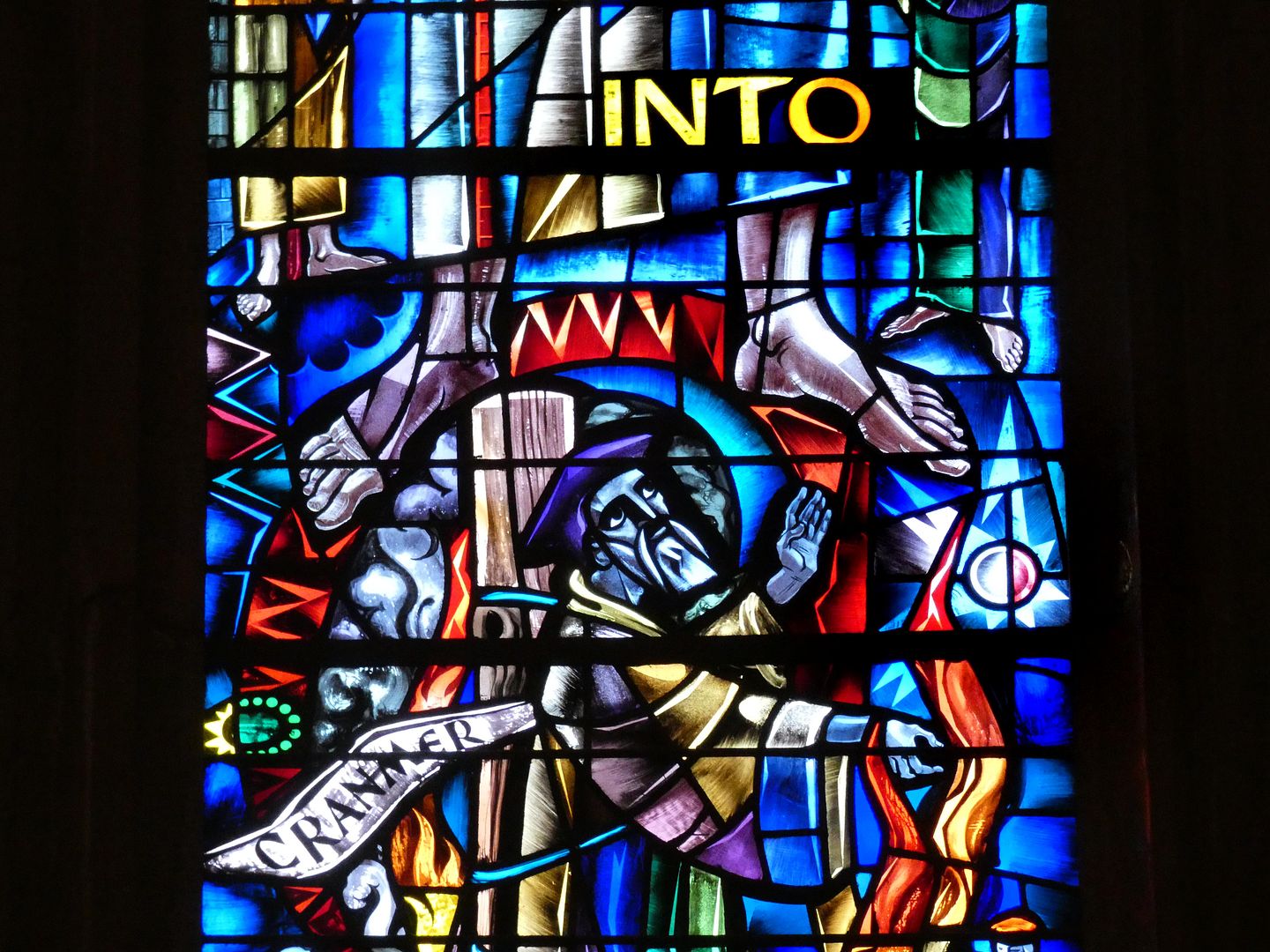
There are depictions of major theologians (or, rather, theological reformers), too...
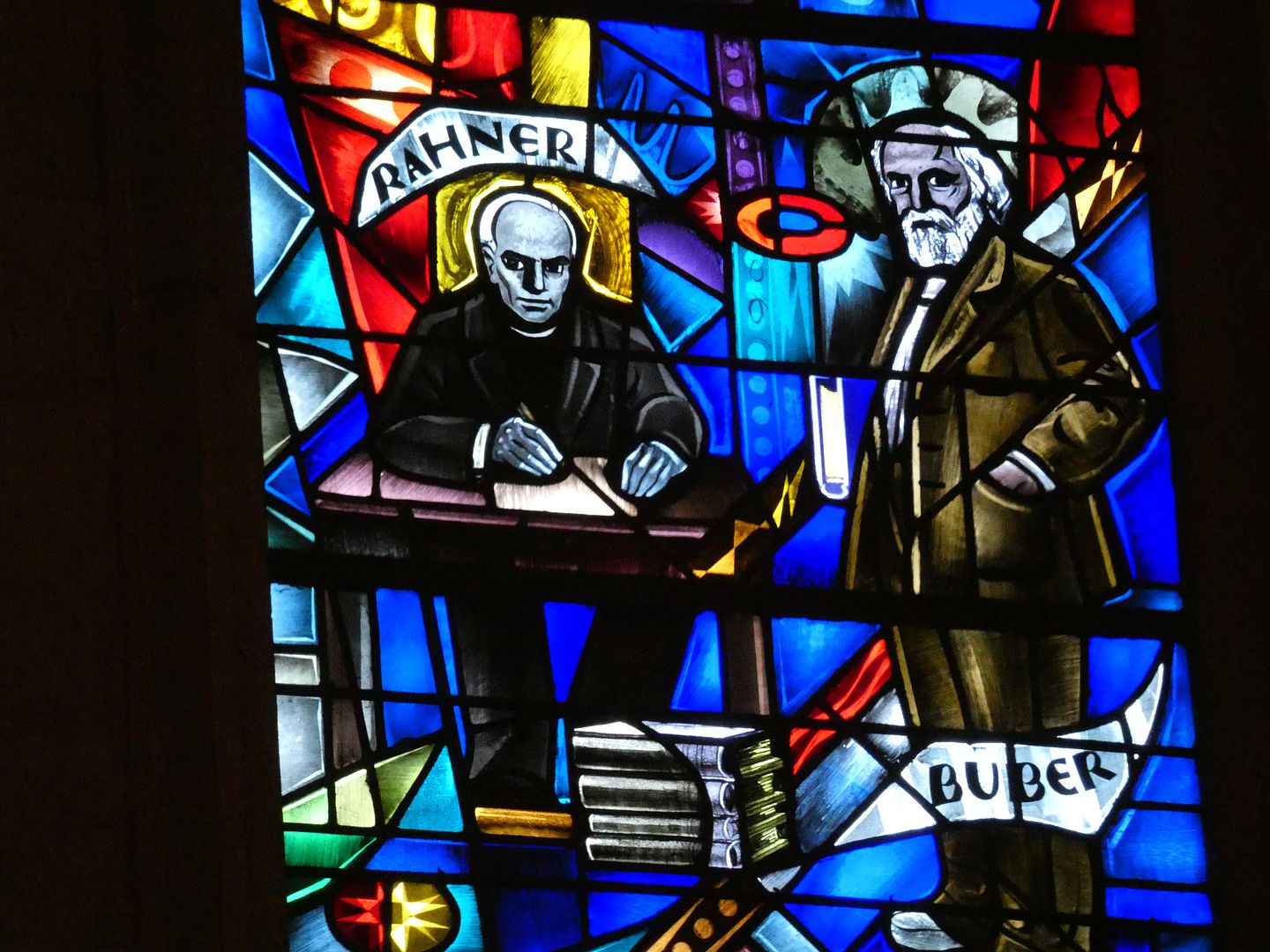
...like Thomas Cranmer, Karl Rahner, and Martin Buber.

The largest of the art glass windows is a dalle de verre (a.k.a. faceted) "rose window" design by Gabriel Loire of Chartres (1964), called "Canticle of the Sun" (named after a 13th-century poem written by St. Francis).
It's only now that I'm realizing how little I actually saw by not taking a guided tour—which goes up into the rafters of the south tower (maybe even into the bell tower) and brings visitors eye-to-eye with the windows.
Which means I've got to go back.
But that's OK, because now I know what I'm missing out on—and now I've got the chance to make it right.
I'll be in San Francisco once again next month, but I've got a full schedule for that trip—so this one will just have to wait a little while longer.
Fortunately, Grace Cathedral was built to stand the test of time, using steel-reinforced concrete that hopefully will survive any future earthquakes or fires that may strike the area.
Related Posts:

No comments:
Post a Comment